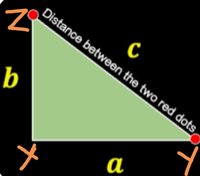One day, two friends went their separate way, one moving to the north while the other to the east. Friend A is going to the north @ 5 ft/second while friend B is going east @ 1 ft/ second. How fast wd they be going from each other after 5 seconds. The answer is i blv 5.099 ft/s. My question is, could there be 2 answers, one is the speed based from the route they each took (right angle distance or the L road for which they took, while the other is the speed after 5 seconds in a straight line. (Since the direction was not an opposing straight line, the default as per mathematical principle is i blv the final position/destination after five seconds which is a straight line from 2 points, not the original route or road they took. Sorry but i was perplexed when this question was brought to my attention by someone, since i am not a mathematician and this is also a math problem of my nephew. 
Thanks,
Raph
Thanks,
Raph
Last edited:

